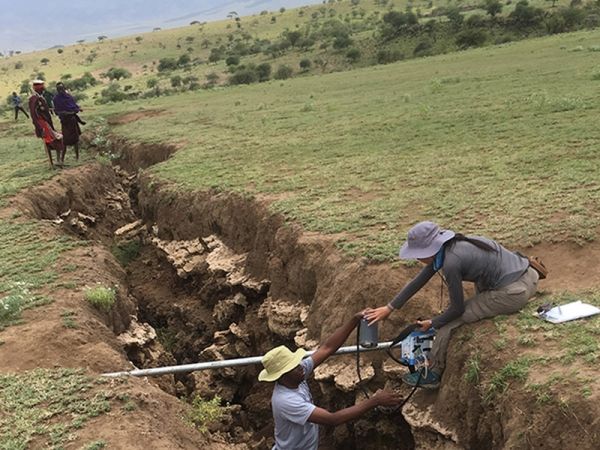Diamonds, those precious, sparkling jewels, are known as the hardest materials on Earth. They are a high-pressure form of carbon and found deep in the ground.
While diamonds are commonly thought of as hard and stable, carbon from about 100 miles beneath the African plate is being brought to shallower levels where diamond will become unstable. Molten rock (magma) brings the excess carbon towards the surface, and earthquakes open cracks that allow the carbon to be released into the air as carbon dioxide.
PhD student Sarah Jaye Oliva and Professor of Earth and Environmental Sciences and Marshall-Heape Chair in Geology Cynthia Ebinger are among a group of international researchers who co-authored a paper “Displaced cratonic mantle concentrates deep carbon during continental rifting,” which was published in the journal Nature on June 3.
“Somewhat amusedly,” Ebinger said, “the paper is evidence that Diamonds Aren’t Forever.”
The pair report on their findings about the African continent splitting in two and the massive amounts of CO2 (carbon dioxide) being released into the atmosphere.
Read more at Tulane University
Photo: Sarah Jaye Oliva, right, a Tulane University PhD student, works with Amani Laizer, a University of Dar-es-Salaam student, to make soil gas measurements in Tanzania in 2018. CO2 gas is flowing from a fissure where molten rock moved up a crack in the Earth’s crust after a Magnitude 5.9 earthquake and the Oldoinyo Lengai volcano (background) erupted in 2007. Maasai pastoralists (middle ground) also observe. (Photo by James Muirhead)


